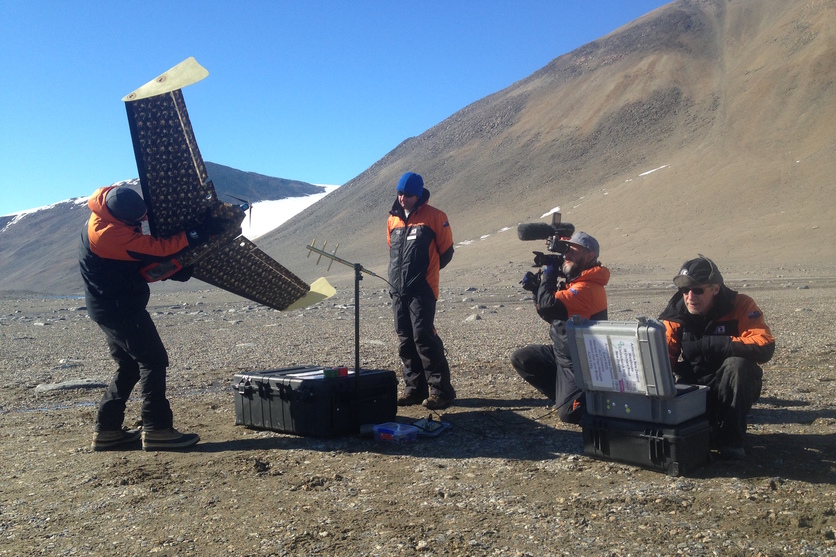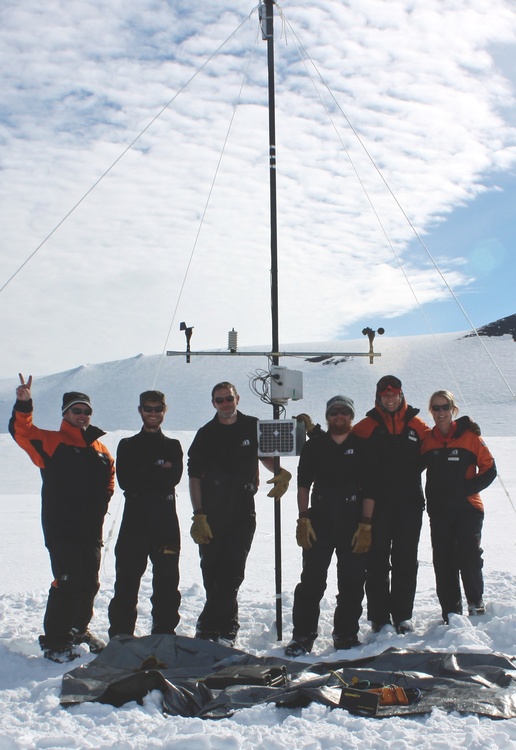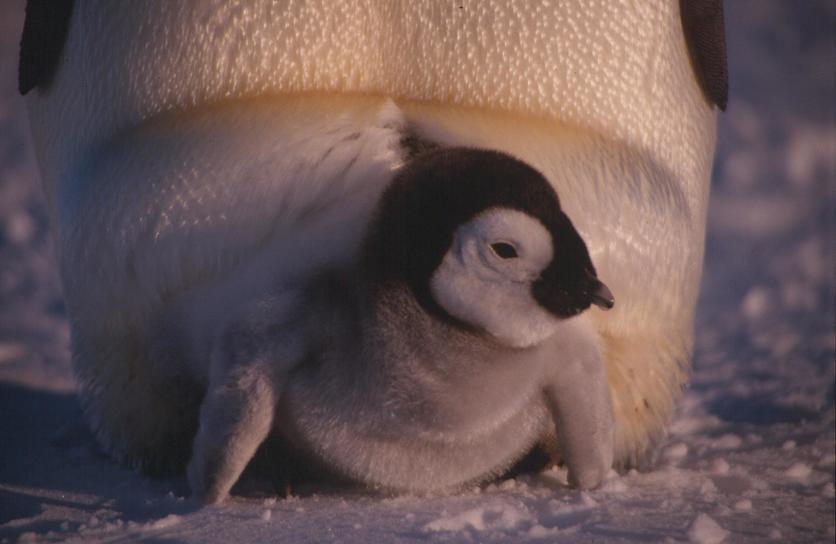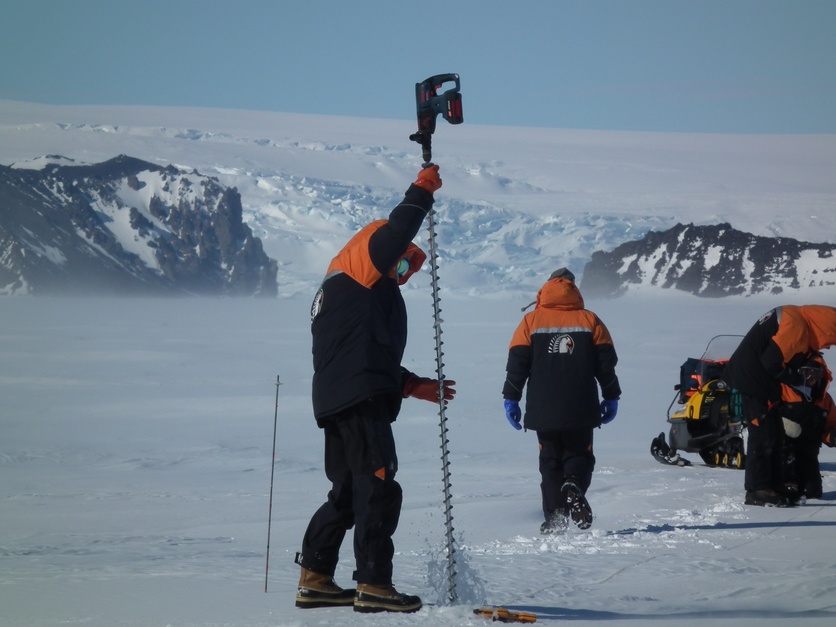Observation and data gathering
Gathering data by conducting field experiments in Antarctica is both expensive and dangerous. All of the gear has to be flown in from places like Christchurch or carried by ship. Travel around the continent is mostly by air. Scientists live in tents or field stations, and they and their research are at the mercy of the weather. Imagine what it must feel like to travel all the way down there and then be confined to a tent for days due to white-out conditions!
Why do scientists go to the effort and expense to research in Antarctica when technologies like satellites and remote sensing can collect information for them? There are several reasons.
Nature of science
Science is based on the systematic collection and interpretation of observations. Every scientist that Nigel talks to when filming the Antarctica series is in the process of collecting data. This may be by direct physical observation (counting penguin chicks or soil invertebrates) or with instruments (data loggers or weather stations).
Collecting samples
One reason to visit Antarctica is to collect samples. There are protocols surrounding the removal of any natural material, but approved projects allow for the collection of ice, soil or other items for study. Lab space, availability and specialist equipment at Scott Base are limited, so often scientists take the samples back to New Zealand for further research. (Of course, all scientists have to follow biosecurity guidelines when bringing samples into New Zealand.)
Tagging and direct measurements
Satellites might allow scientists to count numbers of mammals or birds, but a visit to Antarctica enables scientists to collect more precise data. Dr Amy Whitehead uses both high-tech and low-tech gadgets to monitor Adélie penguin chicks. Electronic tagging enables her to identify specific animals, but she and Nigel also use old-fashioned tools – a ruler, a spring balance and a notebook – to record the growth of individual chicks.
Collecting information from data loggers and weather stations
In addition to direct measurements, scientists use on-site equipment to collect data. Amy uses a sensing bridge to obtain information on microchipped penguins, tracking their movements and behaviour. She has to visit her research site at Cape Bird to download the data.
Ben Jolly sets up temporary weather stations to record information about weather in specific locations. The data is detailed and precise and can take time to interpret. Both scientists take their data back to New Zealand for analysis.
Validating satellite data
Measurements from weather stations – like those set up by Ben – are compared with weather measurements obtained via satellites. The comparisons help to establish the accuracy of satellite data. Working out why differences occur between actual observations and satellite observations helps to make predictive models more accurate.
So, the next time you are sitting at home watching the weather, think about people like Ben here on the Antarctic continent, gathering data to help the rest of us understand not just the weather in our country but how this place affects weather in the entire world.
Nigel Latta
The need for on-going data collection
Our understanding of the world continues to grow and change – new evidence may come to light, or existing evidence may be interpreted in new ways.
The world also continues to change. Antarctica is a polar desert and very responsive to changes in climate. Returning to the Dry Valleys year after year to take samples and make observations helps scientists build up knowledge about the impacts of climate change – both in Antarctica and the rest of the world.
There is also still much to discover about some of the unique ecosystems that exist in Antarctica, as Dr Regina Eisert points out. Because of this, and what research in Antarctica can tell us about the rest of our world, scientists will continue to travel to Antarctica in spite of the costs and danger.
On Thin Ice: Nigel Latta in Antarctica
Watch Series 1/Episode 1
https://adam.antarcticanz.govt.nz/nodes/view/44058
- Dry Valleys data validation (video timecode 31:00–35:00)
Watch 1/Episode 2
https://adam.antarcticanz.govt.nz/nodes/view/44059
- Adélie penguins data collection (video timecode 15:30–20:00)
- Dry Valleys soil testing (video timecode 30:40–33:10)
- Weather stations data collection (video timecode 34:00–38:51)
Tagging
Nigel helps Dr Amy Whitehead gather data from tagged penguin chicks. Tags are a common way to track animals that either travel long distances or live in environments difficult for researchers to access. Tagging protocols are explained in these Science Learning Hub resources.
Activity ideas
Students can learn more about tagging with the student activity Tagging monarch butterflies for science. Even though tagging is an autumnal event, students can practise tagging paper butterflies and research how to record and enter data into the Monarch Butterfly New Zealand Trust website.
Read the level 3 Connected article Captured in ice and try the learning activities in the teacher support materials
Validating satellite data
Nigel braves sub-zero temperatures and fierce winds to visit a Gateway Antarctica weather station. Ben Jolly works with Dr Adrian McDonald and Dr Wolfgang Rack. Check out these Science Learning Hub resources to see how these researchers use observations and satellite data.
- Satellites measure sea ice thickness
- Satellites to study Antarctic atmosphere
- Validating satellite measurements in Antarctica
- Satellites for atmospheric measurements
Nigel counts penguins by hand, but technology is helping to locate penguins in remote and inaccessible areas. See how remote sensing is used to count penguins and how scientists validate the results in Counting penguins from space.
Online citzen science
These projects ask for help analysing satellite images to assist scientists collect information about various species that make Antarctica their home – great classroom projects:
Global ocean conveyer belt
Nigel’s visit to the weather station gets him thinking about the global ocean conveyor belt – the system that carries heat, salt and nutrients around the planet. Nigel explains the system using a pizza. These resources explain it with a few more images and a lot less sauce.
Useful links
Download the PDF of the Antarctic New Zealand Code of Conduct to find out how to minimise the impacts of sampling.
Read about research about the impact of climate change on Antarctica and how this is impacting on penguins, seals, glaciers and ice sheets.
Scientists continue to research climate change from the unique clues that the Antarctic environment holds. Discover more about Victoria University of Wellington’s Antarctic Research Centre Te Puna Pātiotio’s key research areas and how they approach them. The team won the 2019 Prime Minister’s Science Prize.





